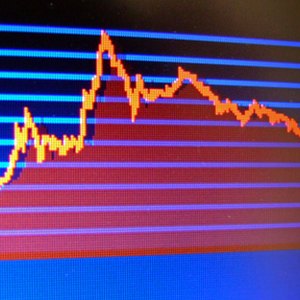
Most companies declare an annual dividend which is distributed to shareholders on a quarterly basis. Investors and shareholders often rely on dividends to meet their cash flow requirements and need to estimate the quarterly dividend in order to plan their expenses accordingly. The calculation of quarterly dividend is based on the assumption that surprise dividends or special dividends are not taken into account as they do not form the regular expected cash flows. However, it is simple to include any form of cash flows in the calculation of quarterly dividends.
Go to a finance website such as Yahoo! Finance, MSN Money, Financial Analysis Made Easy (FAME) or The Wall Street Journal. In the search field, type the stock symbol and click on "search" to obtain the most recent data for the company for which you hold shares. Record the current share price and dividend yield for the company stock you hold.
Multiply the number of shares you own by the share price to determine the total value of investment in that particular company.
Calculate the expected annual dividend per share by multiplying the dividend yield by the share price.
Divide annual dividend by four to obtain the quarterly dividend per share.
Multiply the number of shares held by the quarterly dividend estimated to estimate the total quarterly dividend for the particular stock investment.
Repeat the above steps for all different stock holdings to estimate the quarterly dividend amount for each investment.
Add the estimates of quarterly dividends for each individual stock holding in the investment portfolio to arrive at the total quarterly dividend for the portfolio.
Tips
Make sure that you choose the most recent dividend yield for your estimate of quarterly dividends.
Only include those stocks in your estimation that you intend to hold for the complete year to make sure your cash flow concerns are addressed.
Always maintain a safety margin between your cash flow needs and the expected dividends if you need to meet necessary expenses, as dividends can waver from year to year; unlike interest income, they are not fixed.
Warnings
If a company’s dividend payment fluctuates considerably from one year to another, your estimation will be distorted.
References
- Qualcomm. "Dividends for QUALCOMM Incorporated (QCOM)." Accessed August 18, 2020.
- Nasdaq. "Qualcomm Incorporated Common Stock." Accessed July 30, 2020.
- Internal Revenue Service. "Topic No. 404 Dividends." Accessed July 30, 2020.
- Internal Revenue Service. "Instructions for Form 1120-RIC," Page 2. Accessed July 30, 2020.
- U.S. Securities and Exchange Commission. "Investor Bulletin: Real Estate Investment Trusts," Page 1. Accessed July 30, 2020.
- Internal Revenue Service. "Instructions for Form 1099-DIV," Pages 1-2. Accessed July 30, 2020.
- U.S. Securities and Exchange Commission. "Investor Bulletin: Real Estate Investment Trusts," Page 4. Accessed July 29, 2020.
- Hartford Funds. "The Power of Dividends: Past, Present, and Future," Page 1. Accessed July 30, 2020.
- Nasdaq. "GE Dividend History." Accessed August 18, 2020.
Warnings
- If a company’s dividend payment fluctuates considerably from one year to another, your estimation will be distorted.
Writer Bio
Kevin Sandler started his writing career as an academic researcher in 2005, and has since than been involved in writing for various magazines and academic specialists including Academic Knowledge, Scholastic Experts and eHow, among others. His specialities include personal finance, investments, business and project management. He has a Master of Science in finance from Tulane University, and is actively involved in the finance profession.

